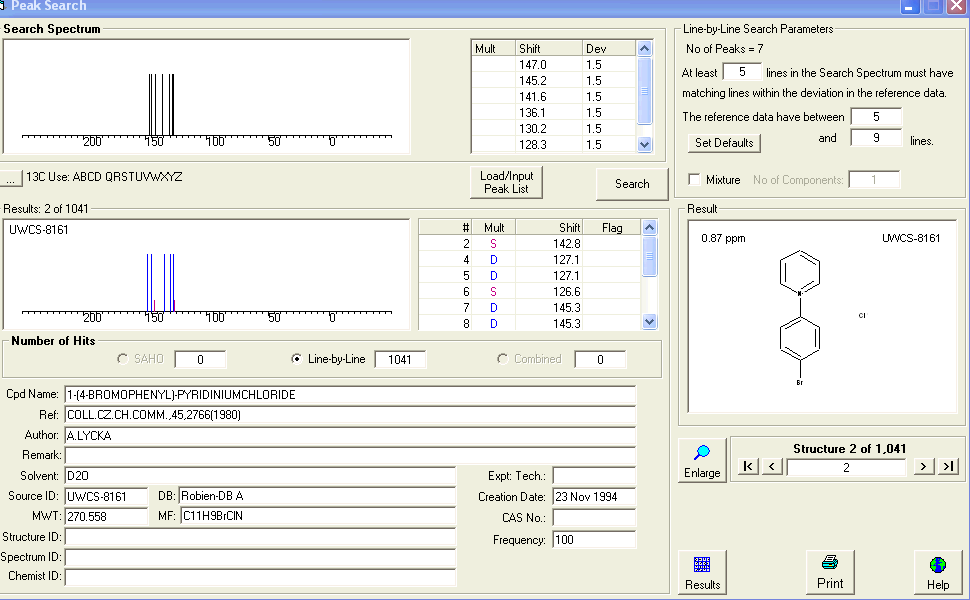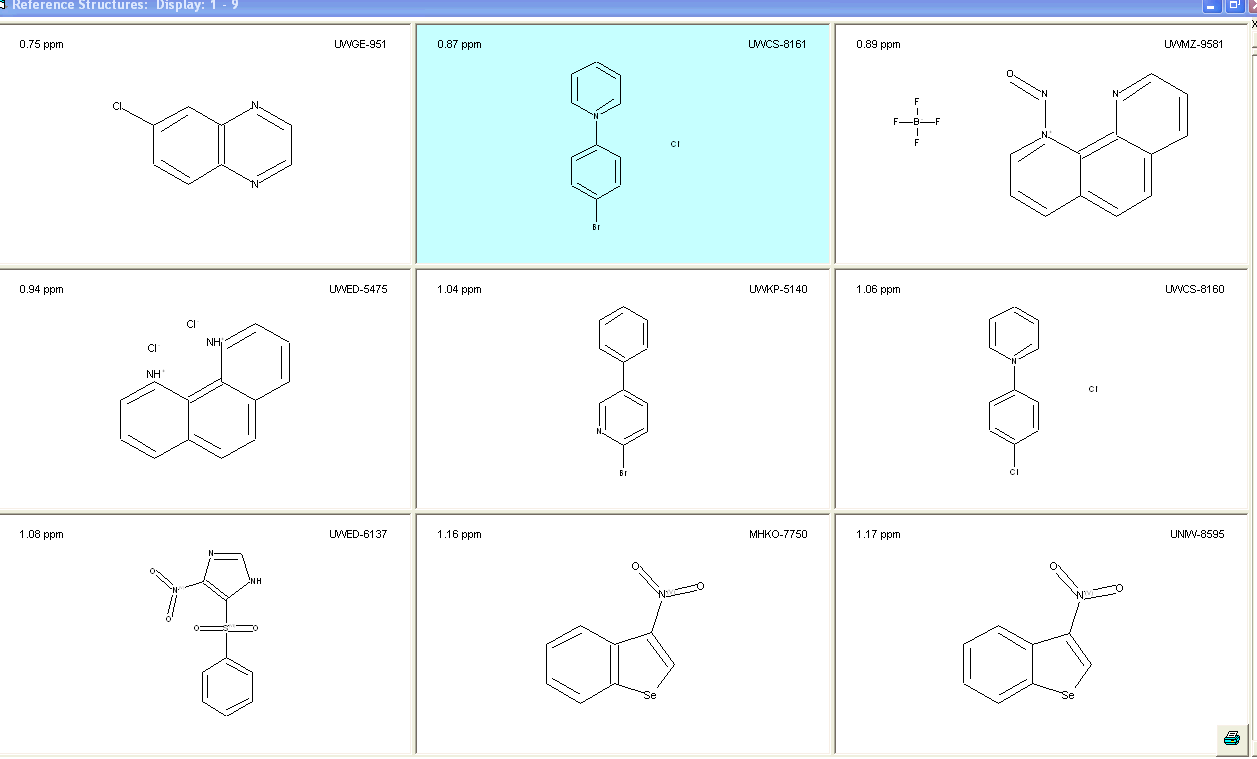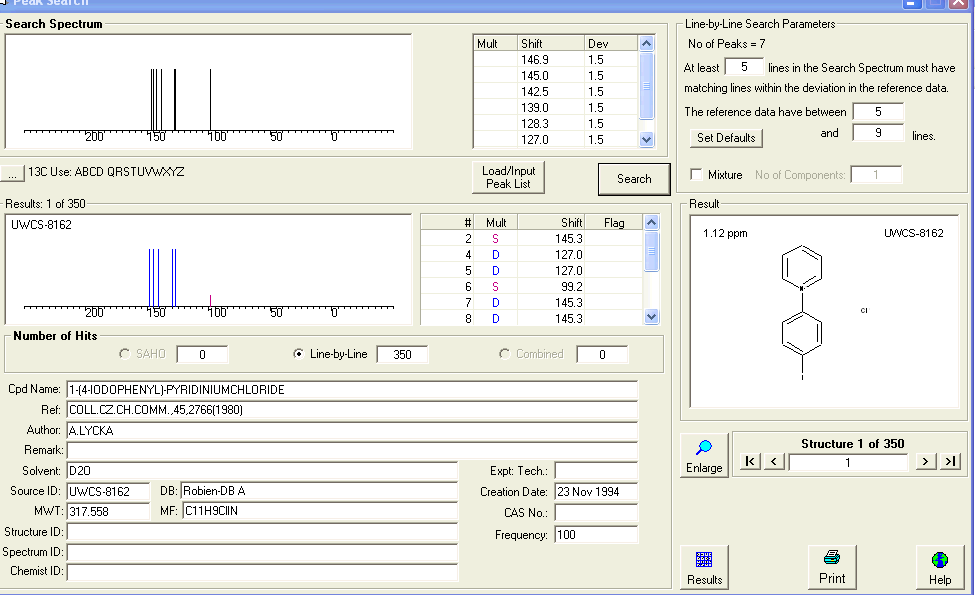100
Year Old Pyridiniumsalts - An Easy Job for NMRPredict !
There was a debate on the synthesis of
1,7-Diaza[12]annulene-derivatives, which were shown to be N-substituted
pyridiniumchlorides by Professor Manfred Christl from University of
Würzburg. The details including all the literature references can
be found in the article 'Angew.Chem., 2007, 119, 9312-9313' written by
M. Christl. One of the points which was discussed by Professor Christl
was the system of peer-reviewing. On the WEB there is also an ongoing
discussion on the implementation of 'robot-referees', which are capable
to check analytical data (see for example Peter Murray-Rust's weblog).
As I always clearly stated on Peter's
weblog, we have already these 'robot-referees' in NMR-spectroscopy,
because we are in the lucky situation that sophisticated algorithms for
spectrum prediction and spectral similarity searches are available.
There is always the discussion on 'Open Access' to analytical(spectral)
data - I have also shown that e.g. spectrum prediction costs the
incredible amount of 1.7 Eurocent per prediction, when using
'NMRPredict
Online Full' with 345,000 C-NMR spectra as knowledge base.
An amount of money neglectible when comparing to the total costs of a
paper on organic synthesis.
I had the honor to get the C-NMR
spectral data from Org.Lett.,2006,8,4279 for my investigation (they are
NOT furthermore available online !)
The central
question was: Is it possible to
recognize that exactly the same C-NMR data as published in Org.Lett.
have been already assigned to different structures, namely the
corresponding pyridiniumchlorides ?
Technology
used:
- NMRPredict / base installation - 131,000 CNMR-spectra
- Search: Spectral pattern search as implemented into NMRPredict,
deviation set to 1.5ppm, all other parameters are default-settings as
done by NMRPredict.
The
result is:
Simply type in
your lines - press the 'SEARCH'-button and get the information, that
exactly these C-NMR spectra have been already published in 1980 by A.
Lycka.
When using the
C-NMR data of compound #3b the N-substituted pyridiniumchloride is on
position #1 after ranking of 134 possible answers:

When using
the NMR-data of compound #3d, 2 answers are found on positions 2 and 6
(chlor- and bromo-derivative respectively)


Starting
from the C-NMR data of 3f leads directly to the correct solution:

Summary:
- A 'robot-referee' for H1, C13, O17, N15, F19, P31, B11 and
Si29-spectra is available
- The name of this 'robot-referee' is NMRPredict,
which utilizes CSEARCH-technology for spectrum-prediction and spectral
similarity searches
- The databases in the background are the combined collections os
CSEARCH and SPECINFO (from
Wiley-VCh) allowing access to 425,000 NMR-spectra
- Obviously these searches have neither been performed by the
authors of the involved papers nor the referees.
- In my internal collections I have approximately 750,000
NMR-spectra online, which seems to be the largest collection throughout
the world. Despite that we put a lot of effort into the collection AND
quality management of new data - for a detailed overview see here.
- The ranking algorithm works quite well, it works slightly better,
when the spectral lines are more scattered over the usual shift range
for carbon ( -OCH3 and -I works extremely well, -Br,-Cl substituents
cause smaller increments, therefore the spectral patterns become less
characteristic !)
Page
written by: Wolfgang.Robien(-at-)c13nmr.at
Page written on: January 31st, 2008
Page online since: January 31st, 2008



